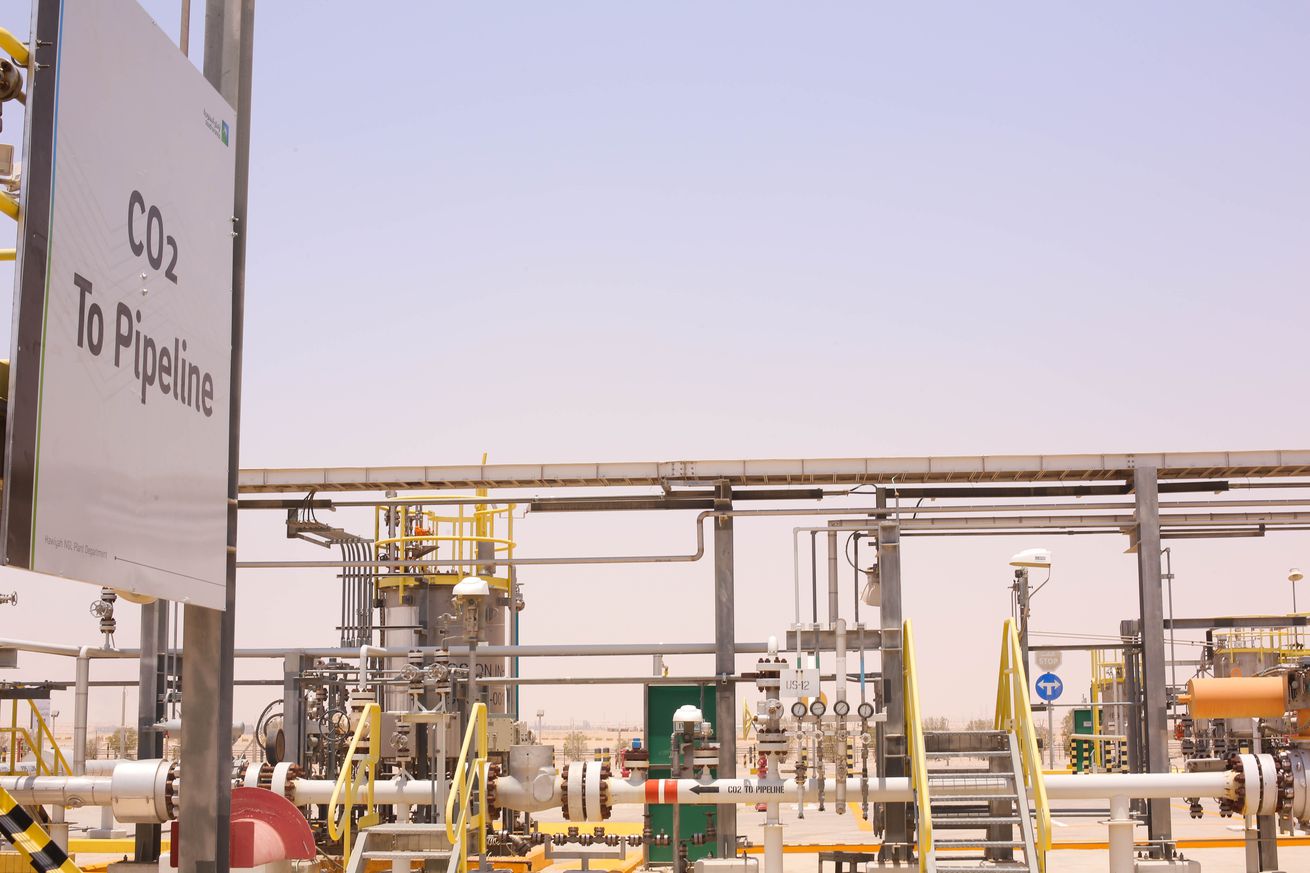Location sign for the ‘CO2 to pipeline’ apparatus at the Hawiyah Natural Gas Liquids Recovery Plant, operated by Saudi Aramco, in Hawiyah, Saudi Arabia, on Monday, June 28, 2021. The Hawiyah Natural Gas Liquids Recovery Plant is designed to process 4.0 billion standard cubic feet per day of sweet gas as pilot project for Carbon Capture Technology (CCUS) to prove the possibility of capturing C02 and lowering emissions from such facilities. | Maya Siddiqui/Bloomberg via Getty Images
Last year, a pipeline carrying compressed carbon dioxide mixed with hydrogen sulfide ruptured, engulfing the small town of Satartia, Mississippi, in a green haze, leaving many residents convulsing, confused, or unconscious. That explosion serves as a vivid warning about the risks posed by what could be the next generation of pipelines to crisscross the US, in a new investigation by HuffPost and the Climate Investigations Center.
“It was almost like something you’d see in a zombie movie,” Sheriff’s Officer Terry Gann tells journalist Dan Zegart about what happened that night. Zegart pieces together the events of February 2020 through harrowing 911 calls and the voices of family…


